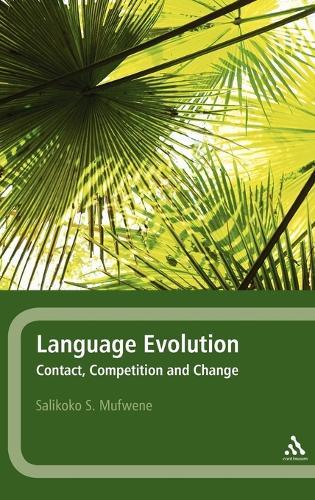Overview
Languages are constantly changing. New words are added to the English language every year, either borrowed or coined, and there is often railing against the ‘decline' of the language by public figures. Some languages, such as French and Finnish, have academies to protect them against foreign imports. Yet languages are species-like constructs, which evolve naturally over time. Migration, imperialism, and globalization have blurred boundaries between many of them, producing new ones (such as creoles) and driving some to extinction. This book examines the processes by which languages change, from the macroecological perspective of competition and natural selection. In a series of chapters, Salikoko Mufwene examines such themes as: - natural selection in language - the actuation question and the invisible hand that drives evolution - multilingualism and language contact - language birth and language death - the emergence of Creoles and Pidgins - the varying impacts of colonization and globalization on language vitality This comprehensive examination of the organic evolution of language will be essential reading for graduate and senior undergraduate students, and for researchers on the social dynamics of language variation and change, language vitality and death, and even the origins of linguistic diversity.
Full Product Details
Author: Salikoko S. Mufwene
Publisher: Bloomsbury Publishing PLC
Imprint: Continuum International Publishing Group Ltd.
Dimensions:
Width: 15.60cm
, Height: 2.20cm
, Length: 23.40cm
Weight: 0.300kg
ISBN: 9780826493699
ISBN 10: 0826493696
Pages: 376
Publication Date: 31 March 2008
Audience:
Professional and scholarly
,
Professional & Vocational
Format: Hardback
Publisher's Status: Active
Availability: Manufactured on demand

We will order this item for you from a manufactured on demand supplier.
Language: English
Reviews
. ..an interesting reading to anyone working in sociolinguistics and language contact...this is a fascinating book, challenging much received wisdom and packed with innovative analysis of some traditional linguistic issues. It is a must-read especially for those interested in the study of creoles and language contact. -;em>The Linguist List, September 29, 2008--Susan Lixia Cheng Linguist List, The
There are also some shortcoming which would have been remedied through rigorous editing, such as the typographical mistake of the word sztrong (p. 123). The use of acronyms for some terminologies is also chaotic: the abbreviations don't appear at the first mention of the terms and even when they have been given, in the following part of the book the terns are written out in fill again. -;em>The Linguist List, September 29, 2008--, Linguist List, The
Author Information
Salikoko S. Mufwene is the Frank J. McLoraine Distinguished Service Professor of Linguistics as well as Professor on the Committee on Evolutionary Biology at the University of Chicago, USA.




